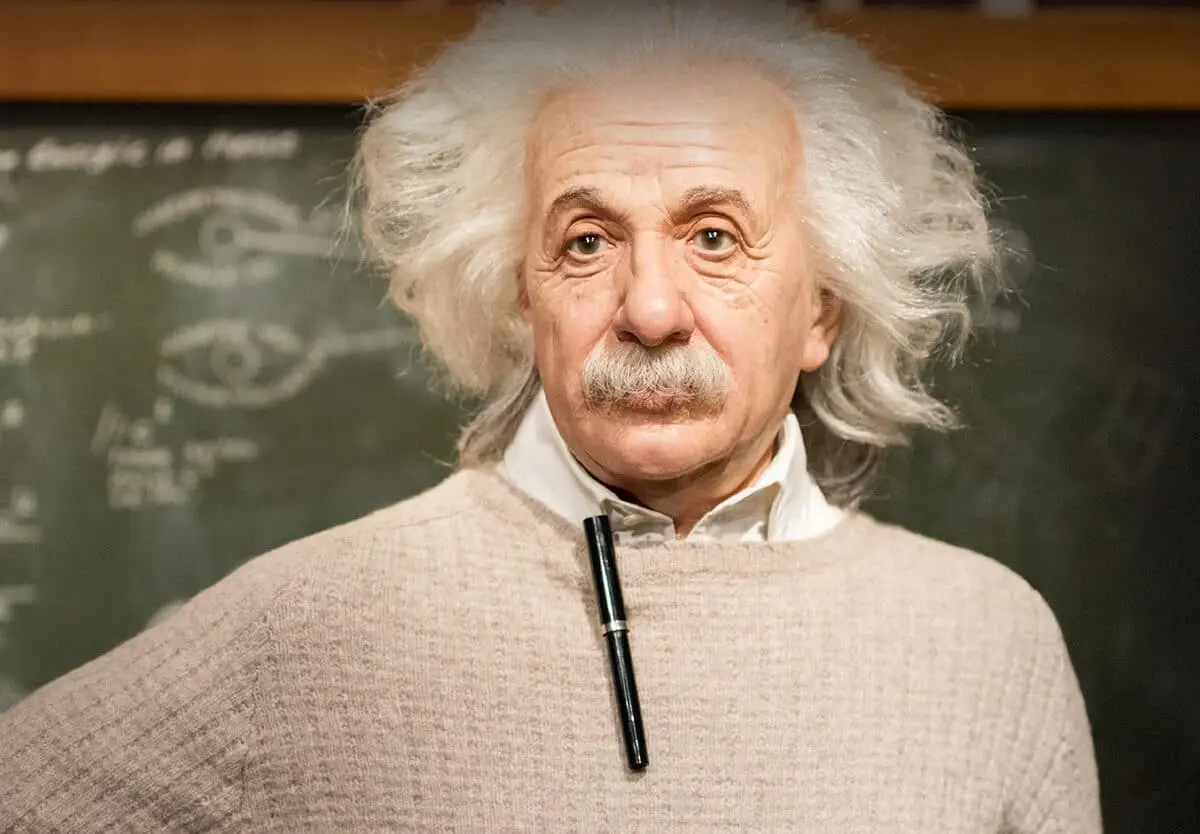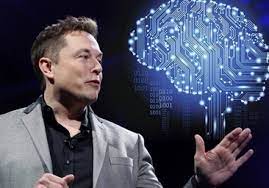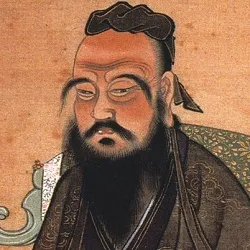- RESEARCHDistance Learning at AIU is enhanced by vast academic resources and innovative technologies build into the Virtual Campus: Hundreds of self-paced courses with video lectures and step by step lessons, thousands of optional assignments, 140,000 e-books, the Social Media & Networking platform allowing collaboration/chat/communications between students, and MYAIU develop students holistically in 11 areas beyond just academics.
- PROGRAMS OFFERED
- Areas of Study
- Courses and Curriculum
- Open Courses
- Register for a Program
- Associate Program
- Associate in Addiction Counseling
- Associate in Agriculture Food And Resources
- Associate in Anti Terrorism Security
- Associate in Behavior Analysis In Special Education
- Associate in Bioethics
- Associate in Climatology
- Associate in Cultural Theological Communication
- Associate in Culinary Arts
- Associate in Ecotechnology
- View all Associates Programs
- Bachelor Program
- Bachelors in Community Development
- Bachelors in Environmental Science
- Bachelor in Education (B.Ed, BS)
- Bachelors in Economics
- Bachelors in Entrepreneurship
- Bachelors in Financial Administration
- Bachelors in Human Resource Management
- Bachelors in Linguistics
- Bachelors in Nutritional Science
- Bachelors in Occupational Health and Safety
- Bachelors in Psychology
- View all Bachelor Programs
- Doctorate Program
- Doctor | of Biology (PhD)
- Doctorate in Business Administration (DBA, PhD)
- Doctor of Economics (PhD)
- Doctor of Electrical Engineering (D.Sc, PhD)
- Doctor of Finance (PhD)
- Doctorate in International Relations
- Doctorate in Information Technology (D.Sc)
- Doctor of Legal Studies (PhD)
- Doctor of Project Management (PhD)
- Doctor of Sociology (PhD, D.Sc)
- Doctorate in Sustainable Natural Resources Management
- View all Doctorate Programs
- Master Program
- Postdoctoral Program
- Postdoctoral in Animal Science
- Postdoctoral in Anti Terrorism Security
- Postdoctoral in Behavior Analysis In Special Education
- Postdoctoral in Bioethics
- Postdoctoral in Blockchain Technology and Digital Currency
- Postdoctoral in Business Management
- Postdoctoral in Cloud Computing
- Postdoctoral in Computer Engineering
- View all Postdoctoral Programs
AIU offers a wide range of majors in areas including the Arts, Business, Science, Technology, Social, and Human studies. More than 120 degrees and programs are available for adult learners at the associate’s, bachelor’s, master’s, doctoral and postdoctoral level. - VIRTUAL CAMPUS
Distance Learning at AIU is enhanced by vast academic resources and innovative technologies build into the Virtual Campus: Hundreds of self-paced courses with video lectures and step by step lessons, thousands of optional assignments, 140,000 e-books, the Social Media & Networking platform allowing collaboration/chat/communications between students, and MYAIU develop students holistically in 11 areas beyond just academics.
- ALUMNI
The world is YOUR campus!”, that is the message of AIU’s month magazine Campus Mundi. Hear the voices and see the faces that make up AIU. Campus Mundi brings the world of AIU to you every months with inspirational stories, news and achievements by AIU members from around the world (students and staff are located in over 200 countries).
Nadir Sidiqi

This essay is about the basic unit of life cell and biological composition of the human body and its functions within the human body and interaction of the human to its surrounding environment and ecosystem based on many researchers and scientific literature. Let’s begin with the cell which is the basic unit of life and how these cells form together is a group called tissues. The biology, components which function within the cells or tissues are operating with organized management.
This basic unit of a life cell could be a single cell such as bacteria or multiple cells such as animals and plants. According to the author of the book “The Hidden Connections” Mr. Fritjof Capra and other related scientists which explain in a marvelous form about the nature of life, the nature of the mind, consciousness, and the nature of social reality. The concern is about how do these units of life cells or tissues of each organism perform a function within the body and then make the organism’s to interact in their environment. The ecosystem and all organisms are co-related with each others for example, animals depends on the photosynthesis of plants for their energy needs, plants depend on the carbon dioxide produced by animals, as well as on the nitrogen fixed the bacteria at their roots. Similarly, plants, animals, and microorganisms all together regulate the entire biosphere and maintain the cycle conducive to life. This brings our attention that “what is life?”
As the science of biology, indicated to us that metabolic processes involve special macromolecules very large molecules consisting of long chains of hundreds of atoms. These long chains consist of protein and nucleic acid (DNA, RNA) which is present in all cells (Luisi, 1998). Bacteria cell has two types of proteins-enzymes, which act as catalysts of different metabolic processes, and structural proteins, which are part of cell structure. On the other hand in higher organisms, there are many other types of proteins with specialized functions, such as the antibodies of the immune system or the hormones. Most metabolic processes are catalyzed by enzymes, which are specified by genes. The cellular processes are genetically controlled, which gives them great stability. The RNA molecules as messengers, delivering code information for the synthesis of enzymes from the DNA, which play role in the cell’s self-multiplication.
That is a crucial characteristic of life. In simple way we can say “living systems are chemical system, which composed of DNA” but there are in dead cells also contain DNA. According to the report of German scientists indicated the precise gene sequence in DNA from a Neanderthal skull bones that had been for over 100,000 years (New York Times, 1997). Thus, only presence of DNA is not valid proof of living, it modifies the definition that “living systems are chemical systems that contain DNA which are not dead or a living system is a system that is alive” (Capra, 2002). According to biochemist Pier Luigi Luisi, who stated the “DNA-centered” view and the “cell-centered” view represent two main philosophical and experimental streams in life science today (Luisi, 1998). If we look at the cell in a big picture a cell is characterized by cell membrane, which is capable permeable and semi-permeability between and its environment.
There is a network of chemical reactions within the boundary so, the system can sustain alive through the processes of metabolism that taking food from outside and chemical reaction taking place within the cell boundary. As biologists Humberto Maturana and Francisco Verela described the term “autopoiesis” literally, self-making (Maturana & Varela, 1980). Autopoiesis can distinguishing between living and nonliving system.
For example, viruses are not alive, because they lack their own metabolism outside living cells. Viruses are inert molecular structures consisting of proteins and nucleic acids. Viruses are needs the metabolism of a living host cell to produce new virus particles, based on encoded in its DNA or RNA. Thus, most metabolic processes are facilitated by enzymes and receive energy through special phosphate molecules known as Adenosine Triphosphate (ATP). Russian biochemist Alexander Oparin in his classic book “Origin of life” the idea that living matter originated from inanimate matter by continues evolutionary process was published in 1929 (Margulis & Sagan, 1986). Oparin called it “molecular evolution” and today commonly referred to as “prebiotic evolution” (Morowitz, 1998). According Harrold Morowitz fantastic little book, “Beginning of Cellular Life” stated in his book the basic principles of biochemistry and molecular biology that are common to all living cells.
It means that multiple chemical bonds are essential to the formation of complex biochemical structures such as carbon (C), nitrogen (N), and oxygen (O) are only atoms that regularly form multiple bonds. Obviously, life begin in water and water molecules (H2O) are electrically highly polar, because their electrons stay closer to the oxygen atom than to the hydrogen atoms, so that they leave an effective positive charges on the H and a negative charge on the O (Morowitz, 1992). There are others elements but the last two major atoms of biological systems are phosphorus (P) and (S) sulphur.
As Morowitz points out that the flow of energy and matter is necessary not only for the growth and replication of vesicles, but also for persistence of stable structures. Water molecules has electrical polarity, because of this polarity certain molecules are attracted by water (hydrophilic), while others are repelled by water (hydrophobic). In addition, fatty acid and oily substances, known as lipids and they are elongated structures with one hydrophilic end and one hydrophobic end. When lipids come in contact with water, they suddenly form a variety of structures. So far chemists have not been able to produce lipids from small molecules. All the lipids in our environment are derived from petroleum and other organic substances. A pioneer research conducted by Pier Luigi Luisi and his colleagues successes in preparing “soap and water” (Luisi, 1998). Catalysts increase the rates of chemical reactions without being changed themselves in the process, which make possible reactions that could not take place without them (Capra, 2002). As we have found that bacteria as the simplest living systems, a living cell as a membrane-bounded, self-generating, well organized closed metabolic network. It involves with highly complex macromolecules such as proteins, and enzymes which act as catalysts of metabolic processes RNA, the messengers carrying genetic code information and DNA, which stores the genetics information as well as cell’s self replication. It draws our attention to the nature of life to the human social dimension, and more important with conceptual thought, values, meaning and purpose that related human consciousness and culture. Thus, understanding of mind and consciousness in our living systems is vital source of interaction.
In the 1970s, Maturana, and Francisco Varela, offered a theory which becomes known as the Santiago Theory of Cognition, which is the identification of cognition, the process of knowing, with the process of life. According to Maturana and Varela cognition is the activity involved in the self generation and self-perpetuation of living networks. A key point of Santiago Theory of Cognition is a living system maintains the freedom to decide what to notice and what will disturb it. To fully understand of consciousness, we must approach it through the careful analysis of conscience experience of the physics, biochemistry, and biology of the nervous system; and of the nonlinear dynamics of neural network (Capra, 2002). Therefore, in social dimension of consciousness the human life focusing our internal world of thought, concepts, beliefs, mental images, intentions, and self awareness. We can ask a question, what about cognition and language? Scientists assumed that chimpanzee communication had nothing to do with human communication because the chimps grunts and screams appear little resemblance to human speech.
According to the observations, research, and conformation of several team of psychologists who spent many years raising chimpanzees in their homes like human children, while communicating with them in American Sign Language (ASL). American Sign Language (ASL) existed for at least 150 years and has its roots in various European sign languages that were developed by the deaf themselves over centuries. Doreen Kimura, neurologist discovered that speech and precise hand movements seem to be controlled by the same motor region of the brain (Kimura, 1976).
George Lakoff and Mark Johnson profoundly presented the evidence for the mind’s embodiment in their book Philosophy in the Flesh (Lakoff & Johnson, 1999). The evidence is based, on the discovery that most of our thought is unconscious, operating at a level that is inaccessible to ordinary conscious awareness. As Lakoff and Johnson summarize “The mind is inherently embodied, though is mostly unconscious, abstract concepts are largely metaphorical” (Referred, Capra to see Ibid). All these biological molecules of human body are connected to the spiritual life. As we look and think of that human body it draws our attention that how these macromolecules or organ of our body are amorously organized and function remarkably. In addition, human being as a noble creature of God, we should appreciate the righteous meaning of life for the purpose to make our lives profoundly meaningful. Fritjof Capra indicated of biological and social phenomena aspect under the four perspectives such as form, matter, process, and meaning. Sociologist Manuel Castells states: “Social structures are the foundational concept of social theory, everything else works through the social” (Castells, 1999).The science of living organism and application of technology is one of the important issues which need to be elaborating as follow.
Author Fritjof Capra stated in book The Hidden Connection: about how the nature of business environment of most companies today change with incredible speed. According to Margaret Wheatly and Myron Keller-Rogers, organizational theorists, “Life is the best teacher about change” (Wheatley & Kellner, 1998). The basic idea of management and essential parts of theory and practice steer an organization in a direction consistent with its goals and purposes (Referred, Capra, See de Genus, 1997a). Social network is the source of development in the recent years.
Social network analysis has become a new approach to sociology, and is employed by numerous scientists to study social relationships and the nature of community (Referred, Capra, See Wallman, 1999). According to Etienne Wenger “they develop a common practice, that is shared ways of doing things and relating to one another that allow them to achieve their joint purpose, over time, the resulting practice becomes a recognizable bond among those involved” (Wenger,1996). In addition, Wenger defines a community of practice as characterized by three features: mutual engagement of its members, a joint enterprise, and over time a shared repertoire of routines, tacit rules of conduct, and knowledge (Wenger, 1998). Here is the task that how can we make and bring change with meaningful purpose to people right from the beginning, to get their attention for participation, and to provide an environment in which their creativity can thrive.
By recommending, simple guiding principle rather than strict rule of instructions, as result of significant changes in power relations, from domination and control to cooperation and partnership. This will lead us with the fundamental implication of the new understanding of life. In recent years, biologists and ecologists have begun to shift their metaphors from hierarchies to networks and have come to realize that partnership the tendency to associate, establish links, cooperate, and maintain symbiotic relationships is one of the hallmarks of life (Capra,1996). As Margaret Wheatley stated it “If we want to succeed with knowledge management, we must attend to human needs and dynamics… knowledge [is not] the asset or capital. People are” (Wheatley, 2001). The significant and effective way to enhance an organization’s learning potential is to support and strengthen its communities of practice (Capra). According to Wheatley statement, “Working for an organization that is intent on creating knowledge is a wonderful motivator, not because the organization will be more profitable, but because our lives will feel more worthwhile” (Wheatley, 1997). To overcome the task and right balance between design and emergence require blending of two different kinds of leadership (Capra, 2002). A common idea of a leader is that of a person who is able to hold a vision, to eloquent it clearly and to communicate it with passion and magnetism. Moreover, a person whose actions embody certain values that serve as a standard for others to attempt for, as well as the ability to hold a clear vision of an ideal form or state of affairs, is something that traditional leaders have common with designers (Capra, 2002). Another type of leadership consists in facilitating the novelty and creating conditions rather than giving directions, and using the power of authority to empower others. Leadership must have creativity and a vision, it means going where nobody has gone before or as whole to create something new. Thus, in that sense understanding of life makes it clear that in the near future such change will be crucial not only for well being of human organizations, but as well for the survival and sustainability of humanity (Capra, 2002). According to Manuel Castells, Professor of Sociology at the University of California at Berkeley “that all major trends of change constituting our new, confusing world are related, and those we can make sense of their interrelationship.
And yes, I believe, in spite of long tradition of something is a way of helping to build a different, better world” (Referred, Capra, See Ibid). Anthony Giddens the director of the prestigious London School of Economics, admits stated “The new capitalism that is one of the driving forces of globalization to some extent is a mystery. We don’t fully know as yet just how it works” (Giddens, 1996).Global currency market alone involves the daily exchange of over two trillion dollars, and since these markets largely determine the value of any national currency, they contribute significantly to the inability of governments to control economic policy” (Referred, Capra, See Ibid).
As Manuel Castells emphasizes that “the emergence of a new electronic communication system characterized by its global reach, its integration of all communication media, and its potential interactivity is changing and will change forever our culture” (Castells, 1996). Here is a task for us that will be the current economic crisis situation how long will the effect persist and how can we overcome this crisis for the benefit and sustainability socially and ecologically nationally as well as globally.
As we are in the era of the twenty-first century, it’s necessary to rethink and recombine the information technology with the biotechnology. Initially, this significant innovation begun in 1970s and reached its initial peak in the 1990s (Capra, 2002). As molecular biologist Mac-Wan Ho stated that genetic engineering, is “a set of techniques for isolating, modifying, multiplying, and recombining genes from different organisms” (Ho, 1998). The science of genetics concludes in the discovery of the physical structure of DNA and the “breaking of the genetic code” during the 1950s (Capra, 1982).
Later on took biologists twenty years, to develop two crucial techniques, which made opened the window of genetic engineering. The first technique is known as “DNA sequencing” is the ability to determine the exact sequence of genetic elements such as the nucleotide bases along any stretch of the DNA double helix (Capra, 2002). The second, one is “gene-splicing” is the cutting and joining together of pieces of DNA with the help of special enzymes isolated from microorganisms (Ho, 1998). As scientists and researchers are involving with the new discoveries in genetics will force biologists to adopt different view that mutations are actively generated and regulated by the cell’s epigenetic network. So, that evolution is an integral part of the self-organization of living organisms (Capra, 2002). As James Shapiro, molecular biologist indicated that: These molecular insights lead to new concepts of how genomes are organized and reorganized, opening a range of possibilities for thinking about evolution. Rather than being restricted to contemplating a slow process depending on random (i.e. blind) genetic variation … we are now free to think in realistic molecular ways about rapid genome restructuring guided by biological feedback networks (Shapiro, 1999).
As we are facing, the challenges and problems that are arising with the understanding of the relationship between genes and disease, the use of cloning in medical research and the application of biotechnology to agriculture. These are the central points in the narrow conceptual framework of genetic determinism and are requiring by broader and scientific research, environmentally feasible based biotechnology framework (Capra, 2002).
According to David Weatherall, director of Oxford University’s Institute of Molecular Medicine stated that “Transferring genes into a new environment and enticing them to … do their jobs, with all the sophisticated regulatory mechanisms that are involved, has so far, proved too difficult a task for molecular geneticist” (Weatherall, 1998). Geneticists were hoped to associate specific diseases with single genes, but it turned out that single gene disorders are extremely rare, accounting for less than 2 percent of all human diseases For example, sickle-cell anemia, muscular dystrophy, or cystic fibrosis, where a mutation causes a malnutrition in a single protein of essential, the links between the defective gene at the beginning and course of the disease are still not understand well (Capra, 2002). Another example, the development of suckle –cell anemia which is common in African and African-Americans, can be considerably different in individuals carrying the same defective gene, varying from early childhood death to a virtually unrecognized condition in middle age (Lander & Schork, 1994).
As Capra mentioned in his book about Mae-Wan Ho points out, their attempts to identify genetic predispositions for diseases like cancer, diabetes, or schizophrenia and worse, for conditions such as alcoholism or criminality stigmatizes individuals and diverts attention from the crucial role of social and environmental factors that affect these conditions (Ho, 1998). The main concern of the biotech companies are, obviously, first their own financial gain rather than human health or progress in medicine benefits.
In other word the shareholder values of their business enterprise remain high, despite the lack of any significant medical benefits, is to perpetuate the perception among the general public about potential gene behavior (Capra, 2002). Another related issue of concern is among the general public, about the news in 1997 that a sheep had been “cloned” by embryologist Ian Wilmut and his colleagues at the Roslin Institute in Scotland, this issue was developed intense anxieties and debates between general public as well as scientific community (Capra, 2002). Still people are wondering, about ethical guideline and outcome of this type of research. Here are questions arise in mind of every one as Capra indicated that ethical problems of cloning experiments on animals would be magnified enormously were they to involve human beings.
How many human embryos would we be prepared to sacrifice? How many developmental monstrosities would we allow to be created in Faustian research? Without any doubt, that any attempt to clone human beings at this stage of our knowledge would be totally immoral and unacceptable. It is the responsibility of scientists and researchers, even in the case of cloning experiments on animals to establish strict ethical rule and regulation and open its research to general public review and suggestions. Similarly, issue of biotechnology to agriculture with the application of genetic engineering have aroused much more widespread resistance among the general public than have the medical application.
Based on several reasons of resistance which has been grown worldwide, and most people of the world have limited access to food and therefore, they are naturally worried when they feel their food has been chemically contaminated or genetically manipulated. However, though they may not understand the difficulty of genetic engineering, they may become doubtful, when they find out about food developed through genetic engineering, under the secret of powerful corporation for the purpose to sell their products without any health warnings, labels, or even discussions (Capra, 2002). Its claim by biotech, that new crop varieties, will be drought tolerant, and resistant to insect and weeds. Fruit will not disease or bruise and agriculture will not depend on chemicals and environment will not pollute.
As a result there will be better quality of food, even safer than ever before, and world hunger will finish. According environmentalists and social justice advocates stated that many of us remember that very similar language was used by the same agrochemical corporation, when they promoted a new era of chemical farming, and called “Green Revolution” several decades ago (Capra, 1982). Since, that time many evidence found about painful and dark side of agrochemical effects for the health of the soil, human health, social relationship and entire ecosystem. As David Ehrenfeld biologist indicated: Like high agriculture, genetic engineering is often justified as a humane technology, one that feeds more people with better food. Nothing could be further from the truth. With very few exceptions, the whole point of genetic engineering is to increase the sales of chemical and bio-engineered products to dependent farmers (Ehrenfeld, 1997).
As Capra stated that: Most innovations, in food biotechnology, have been profit-driven rather than need driven. For example, Monsanto developed bio- engineered soybeans to resistant specifically to the company’s herbicide Roundup, so to increase the sales of that product. As Miguel Altieri and Peter Rosset, agroecologists, point out, this argument is based on two mistaken assumptions (Altier & Rosset, 1999). The first is that world hunger is caused by a global shortage of food; the second is that genetic engineering is the only way to increase food production.
This is broad topic and concern to live of every one, so, there are always continue debates and arguments exist between scientists, environmentalists, and general public. Similarly, the story of the genetically engineered “golden rice” is heartbreaking example, a few years ago, a small team of idealistic geneticists without industry support created yellow rice with high levels of beta-carotene, which is converted to vitamin A in the human body. This rice was promoted as a treatment for the blindness and vision who are suffering from vitamin A deficiency. Vitamin A deficiency affects more than two million children at the time of the original author Fritjof Capra and his book. Thus, the news of “miracle cure” was enthusiastically welcome by press, but later on study has shown that instead of helping children at risk, the project is likely to repeat the mistakes of the Green Revolution while adding new hazards for ecosystems and public health (Shiva, 2001).
Vandana Shiva, agroecologist point out, that women farmers in Bengal, India, for example, use numerous varieties of green leafy vegetables that are an excellent source of beta-carotene. Those who suffer the highest rates of vitamin A deficiency are the poor, who are suffering from malnutrition in general. They would benefit much more from the development of sustainable agriculture, rather than from genetic modified crop, because they could not afford it. On the other hand the good news is a solution both times honored and new that is currently slowly turning the farming world from Green Revolution and bio-engineering to a new an ecological alternative direction known as “Organic Farming” or “Sustainable Agriculture” (Jackson, 1985, Altieri, 1995, Mollison, 1991). Organic crop growers they use technology based on ecological knowledge rather than chemistry or genetic engineering to increase yields, control pests, and build soil fertility. In organic farming, crop rotation plying a significant role in reducing and disappearing of insect and pathogen with the next rotation non-susceptible crop.
It is not a good idea to eradicate insects completely, because this would also eliminate the naturally beneficial insects that keep insects in balance in a healthy ecosystem. Organic farming, instead of chemical fertilizers, these farmers enrich their fields with manure and tilled-in crop residue, thus, returning organic matter to the soil to continue the biological cycle. Organic farming is sustainable because it represents ecological principles that have been tested by evolution for billions of years (Capra, 1996).
In the view of organic farming, a fertile soil is a living soil containing billions of living organisms in every cubic centimeter (Capra, 2002). The total area being farmed sustainably is estimated at more than 7 million hectares (17 million acres), and the market for organic food has grown to an estimated $22 billion a year based on the report of seven year ago at the time of published of this book. Study reported in southern Brazil, the use of covers crops to increase soil activity and water retention enabled 400,000 farmers to increase maize and soybean yield by over 60 percent.
In Bangladesh, an integrated rice-fish program raised rice yields by 8 percent and farmers income by 50 percent. In Sri Lanka, integrated pest and crop management increased rice yields by 11 to 44 percent, while augmenting net incomes by 38 to 178 percent (Capra, 2002). The most unusual and now popular story is probably the genetically engineered hormone such as “recombinant bovine growth hormone” which is used to make more milk production in cows besides the fact that American dairy farmers have made more milk than people can for the past fifty years (Capra, 2002).
In addition, to human diseases, pest and diseases problems of agriculture crop, there is abiotic factors or climate change also effects on our life and ecosystem. As a result, impact of climate change in our society, region, and worldwide will suffer with the shortage of food, water, and shelter and so on. To realize the fact and fluctuation in our ecosystem, it is necessary to generate no overall waste in ecosystem.
As Capra, point out about the principle “waste equal food” basically all materials manufactured by industry and even wastes generated in the manufacturing processes, must ultimately be some form of a new and useful product (Hawken, 1993, McDonough and Braungart, 1998). There are an organization called Zero Emission Research and Initiatives (ZERI) found by business entrepreneur Gunter Puali in the early 1990s. For example, extract cellulose from wood to make paper, we cut down forests but use only 20 to 25 percent of the trees, discarding the remaining 75 to 80 percent as waste. Beer breweries extract only 8 percent of the nutrients from barely or rice for fermentation, palm oil is 4 percent of the palm tree’s biomass and coffee beans are 3.7 percent of the coffee bush (Pauli, 1996). Similarly, did we ask ourselves in the US or other developed countries that how food or other necessary products we waste per day?
The beauty and nature of our ecosystem is existing with tremendous abilities to return us a byproduct, if we know very well what is our input and what will be the output for the benefit and sustainability of us. We should acknowledge with sincere gratitude this precious gift of life which has grant by God, and take advantage of it with love, wisdom, respect, and sincerity within the family, community, nationally and globally.
We are concerned about sustainable life with the rethinking of new thoughts of sustainable agriculture, which is meant food for all, it is the issue of health for every one, it is the soil which concerns every one, it is the safety of water which is drunk by everyone and finally it is the air which everyone breathes. Indeed, these are vital issues and concern the entire ecosystem based on recent scientific research (Balfour, 1943.9). This brings our attention to the concept of connection or networking, it mean from the basic human life structure which is cell the basic unit of life, into tissue as group of cells, into organs and then into human body. There are many questions need to be answered that how these cells, tissues, organs and human body amazingly function and interact within the human body. And how incredibly perform duties as individual, as society, as country, and globally in different part of the world under different climate, soil, and natural resources. It is monitored and supervised under the responsibility of different organizations such as local communities, NGOs, local governments and United Nation Organization.
For us as human being one thing we have all in common that is “Life” and how to respect and appreciate this gift of life for the purpose to be beneficial, and enjoyable with dignity and honor around world. To understand and appreciate the nature of life, we need to respect and try to understand how these perishable and non-perishable components such as plants, animals, microorganisms, water, soil and solar system. We also need to understand the natural resources, their functions, environmental effects and interaction between them. To keep and maintain sustainable livelihood, it require proper tools, information technology, networking biological, biotechnological, and ecological awareness and integration with the organized and management plan of action. We learn day by day from the needs and requirements of basic and gradual human needs, which require us to function in a systematic by using modern technology and the recent researches done by scientists and professionals. each other.
It is time we need to bring changes and combat the challenges, which we are facing in this century. We have tremendous opportunities and resources are available. But the fact is polluted environment and risky livelihood with contamination of toxic chemical make our planets under stressful situation, which impact on agricultural and industrial throughout the ecosystem. In spite, of numerous inventions and technological and scientific discoveries in various fields: such as medicine, engineering. agriculture, economics, finances, and social sciences. In future we need to work harder with wisdom to improve the humanity over all.
Therefore, we can reach to the conclusion according to the above mentioned facts, that there are different races, languages, cultures, and religions, but need the desire, and sincerity which we all have in common regardless of regional or nationality is to bring peace and prosperity to our body and mind, which build the families, communities, in all the countries around the world. So, we all nations can live in peace and harmony.
References
1. Capra, Fritjof. The Hidden Connections. New York, USA: Doubleday a division of Random House Inc, (2002).
2. See New York Times, (1997).
3. Luise, Pier Luigi. Origins of Life and Evolution of the Biosphere. Germany: (1998).
4. Maturana Humberto and Varela. Autopoiesis and Cognition. Holland: (1980).
5. Margulis, Lynn and Sagan Dorion. Microcosmos. Published originally in (1986). New edition by University of California Press, Berkeley: (1998).
6. Morowitz, Harold. Beginning of Cellular Life. Yale University Press: (1992).
7. Kimura, Doreen. The Natural Basis of Language Qua Gesture. In H. Whitaker and H. Whitaker (eds.). Studies in Linguistics. Vol.2. Academic Press, San Diego: (1976).
8. Lakoff, George and Johnson Mark. Philosophy in the Flesh. Basic Books, New York: (1999).
9. Reported by Capra Fritjof, to see Ibid. p.3.
10. Castells, Manuel. with Capra personal communication: (1999).
11. Wheatley and Kellner, Rogers: (1998).
12. Referred, Capra, See de Genus: (1997a).
13. Wellman, Berry (ed.). Networks in the Global Village. Colorado: Wrestview Press, (1999).
14. Wenger, Etienne. Communities of Practice. Healthcare Forum Journal/August: (1996).
15. Wenger, Etienne. Communities of Practice. Cambridge University Press: (1998).
16. Capra, Fritjof. The Web of Life. New York: (1996).
17. Wheatley, Margaret. Information Management Journal. (2001).
18. Wheatley, Margaret. Seminar on Self-Organizing Systems. Utah, USA: (1997).
19. Referred by Capra, Fritjof. See Ibid, p. 4.
20. Giddens, Anthony. Times Higher Education Supplement. London: (1996).
21. Castells, Manuel. The Information Age, Vol. 1, the Rise of the Network Society. Blackwell: (1996).
22. Ho, Mae-Wan. Genetic Engineering Dream or Nightmare? U.K: Gateway Books, Bath, (1998a).
23. Weatherall, David. How Much Has Genetics Helped? London: Times Literary Supplement. (1998).
24. Capra, Fritjof. The Turning Point. Simon and Schuster, New York: (1982).
25. Ehrenfeld, David. A Techno-Pox upon the Land. Harper’s Magazine: (Oct, 1997).
26. Altieri, Miguel. and Rosset. Ten Reasons Why Biotechnology Will not Ensure Food Security, Protect the Environment and Reduce Poverty in the Developing World. Agbioforum, vol. 2, nos.3&4, (1999).
27. Shiva, Vandana. Genetically Engineered Vitamin A Rice: A Blind Approach to Blindness Prevention. In Tokar (2001).
28. Jackson, Wes. New Roots for Agriculture. University of Nebraska Press: (1985).
29. Hawken, Paul. The Ecology of Commerce, New York: (1993).
30. McDonough, William and Michael, Braungart. The Next Industrial Revolution, Atlantic: (Oct, 1998).
31. Pauli, Gunter. Industrial Clustering and the Second Green Revolution. Lecture at Schumacher College, May (1996, unpolished).
Atlantic International University
Get to know the AIU experience
Contact Us Today!
We understand how busy adults do not have time to go back to school. Now, it’s possible to earn your degree in the comfort of your own home and still have time for yourself and your family. The Admissions office is here to help you, for additional information or to see if you qualify for admissions please contact us. If you are ready to apply please submit your Online Application and paste your resume and any additional comments/questions in the area provided.
Pioneer Plaza
900 Fort Street Mall 905
Honolulu, HI 96813
800-993-0066 (Toll Free in US)
808-924-9567 (Internationally)
808-947-2488 (Fax)
AIU Success Stories







Contact Us Today!
Begin Your Journey!
AIU’s Summer of Innovation and Growth gives you the ability to earn up to $5000 in tuition credit by completing free lessons and courses.
Whether you’re looking to acquire new skills, advance your career, or simply explore new interests, AIU is your gateway to a world of opportunities. With free access to 3400 lessons and hundreds of courses the ability to earn credits and earn certificates there’s no better time to start learning.
Join us today as a Guest Student and take the first step towards a brighter, more empowered future.
Explore. Learn. Achieve.
Degrees

Contact Us
Atlantic International University
900 Fort Street Mall 905 Honolulu, HI 96813 [email protected]
Quick Links
Home | Online Courses | Available Courses | Virtual Campus | Career Center | Available Positions | Ask Career Coach | The Job Interview | Resume Writing | Accreditation | Areas of Study | Bachelor Degree Programs | Masters Degree Programs | Doctoral Degree Programs | Course & Curriculum | Human Rights | Online Library | Representations | Student Publication | Sponsors | General Information | Mission & Vision | School of Business and Economics | School of Science and Engineering | School of Social and Human Studies | Media Center | Admission Requirements | Apply Online | Tuition | Faculty & Staff | Distance Learning Overview | Student Testimonials | AIU Blogs | Register for Program | Privacy Policy | FAQ


















